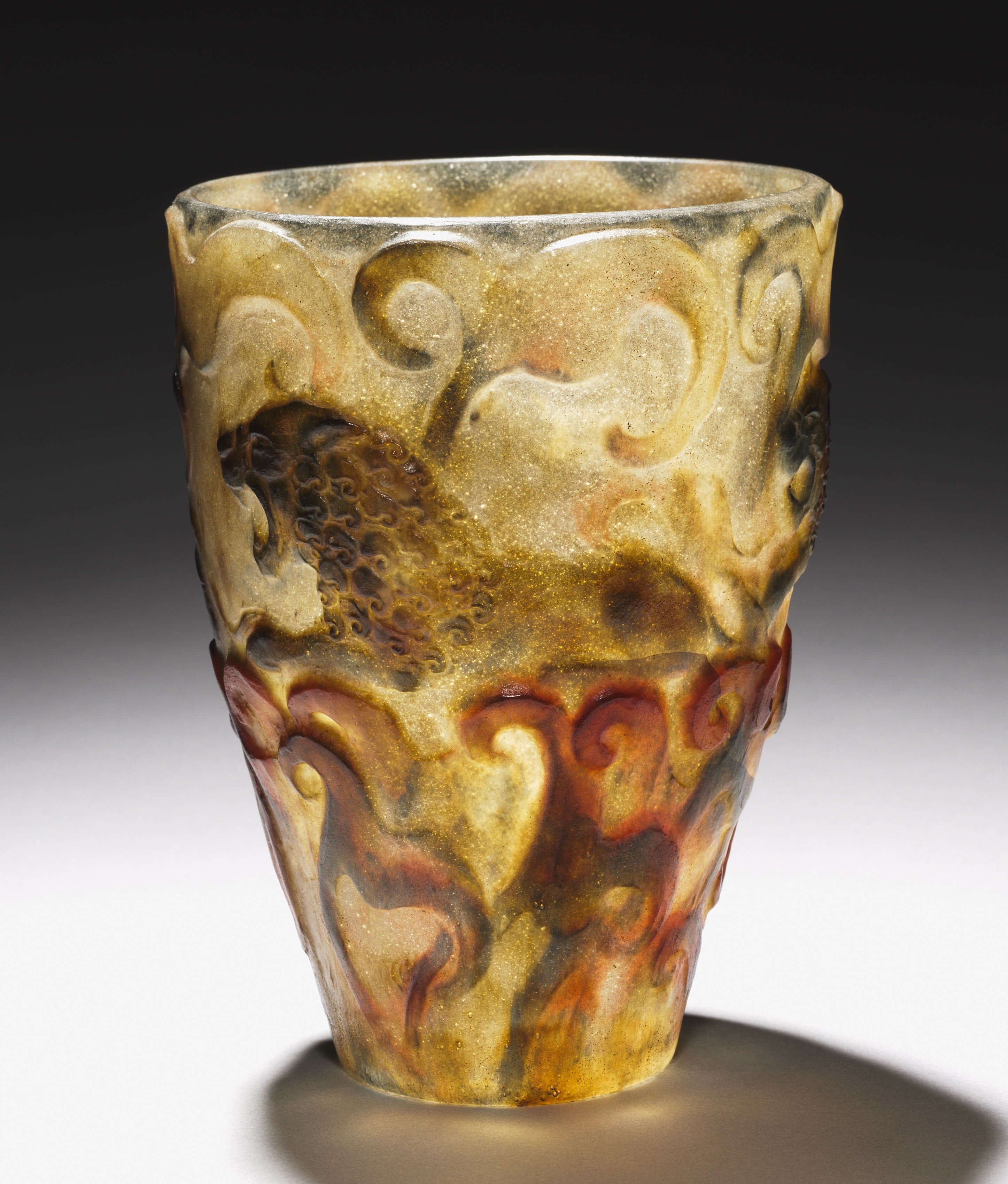The Cleveland Museum of Art
Collection Online as of April 18, 2024

Lions Vase
designed 1926
designer
(French, 1885–1953)
Diameter: 16.4 cm (6 7/16 in.); Overall: 22.2 cm (8 3/4 in.)
Gift of Henry H. Hawley 1995.92
Location: not on view
Did You Know?
The Lions Vase was inspired by ancient Assyrian art and features a fierce composition of a preying lion with curls on its mane that are echoed by the surrounding swirls in the glass, linking subject and form.Description
The ethereal translucent quality of this vase, where the colors seem to fade into one another, is created through a process of casting in which patterns are created with a mixture of colored glass powders and a binder such as gum arabic then fired to become fused together.Gabriel Argy-Rousseau was among the most notable artists of the early 1900s working in this style of studio glass production. He eventually developed a semi-industrial technique of using molds to produce multiple works from a single model, but the process still involved extensive manipulation by the artist to achieve an artistic result.
- 1956-1995Henry H. Hawley, Cleveland, OH1995-The Cleveland Museum of Art, Cleveland, OH
- Bloch-Dermant, Janine, Gabriel Argy-Rousseau, and Yves Delaborde. G. Argy-Rousseau: les pâtes de verre : catalogue raisonné. Paris: Editions de l'Amateur, 1990. pp.78 and 209; no.26.08Coffin, Sarah D., and Stephen Harrison. The Jazz Age: American style in the 1920s. Cleveland: Cleveland Museum of Art, 2017. Reproduced: fig. 54, p. 31
- The Jazz Age: American Style in the 1920s. Cooper Hewitt, Smithsonian Design Museum, New York, NY (April 7-August 20, 2017); The Cleveland Museum of Art, Cleveland, OH (organizer) (September 30, 2017-January 14, 2018).
- {{cite web|title=Lions Vase|url=false|author=Gabriel Argy-Rousseau|year=designed 1926|access-date=18 April 2024|publisher=Cleveland Museum of Art}}
Source URL:
https://www.clevelandart.org/art/1995.92